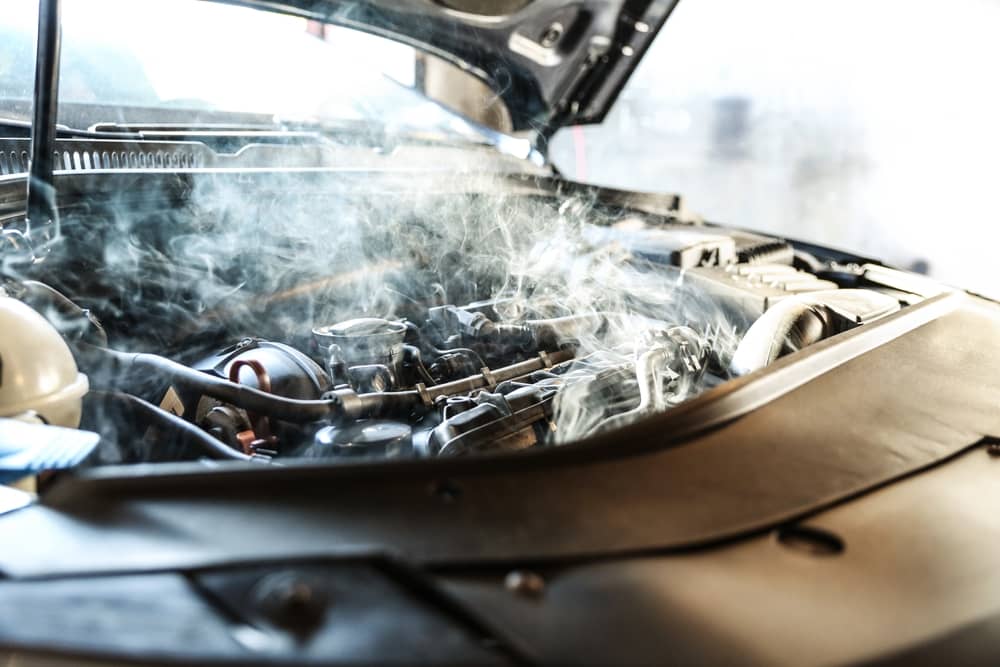That sudden surge of heat from your engine, the gauge soaring into the red, and then a complete shutdown – it’s a deeply unsettling experience for any driver. When your car overheats to the point of shutting off, your vehicle’s safety mechanisms have likely engaged to prevent catastrophic engine damage. Knowing how to react calmly and correctly in this situation is crucial.
The Immediate Aftermath: What to Do Right Now
If your car overheats and then stops running, follow these critical steps without delay:
- Pull Over Safely, Immediately: As soon as you recognize the signs of overheating (steam, rising temperature gauge, warning lights), find the nearest safe spot to pull off the road. Do not try to make it to your destination or the next exit.
- Turn Off the Engine: Once you are safely pulled over, turn off your engine. This stops the heat-generating process and begins the cooling process.
- Do NOT Open the Hood or Radiator Cap Yet: Resist the urge to immediately open the hood or, more critically, the radiator cap or coolant reservoir cap. Your cooling system is under immense pressure and filled with scalding hot liquid and steam. Opening it prematurely can cause severe burns.
- Wait for the Engine to Cool Down: Give your engine ample time to cool. This can take anywhere from 20 minutes to an hour, depending on how hot it got and ambient temperatures. Patience is key here.
After the Car Cools Down: Safe Inspection
Once the engine is cool to the touch (you should be able to place your hand on the hood without discomfort):
- Carefully Open the Hood: Lift the hood to allow remaining heat to escape and to get a visual on the engine compartment.
- Locate and Check the Coolant Reservoir: Find the plastic coolant reservoir (usually translucent with “MIN” and “MAX” lines). Check the coolant level. If it’s empty or very low, this likely indicates a leak or significant coolant loss.
- Look for Obvious Leaks: Scan the ground under your car and inspect visible hoses and radiator connections for any puddles or drips of coolant (which is often green, orange, or pink). Also, check for any visible cracks or damage to the radiator itself.
- Do NOT Add Water or Coolant Yet: If you find the coolant is low, resist adding more fluid unless you are certain there are no significant leaks. Adding fluid to a severely compromised system might only leak out immediately or cause further issues if there’s a serious underlying problem.
Next Steps: Getting Back on the Road (Safely)
If your car overheats and shuts off, it signals a significant problem that requires professional attention.
- Do NOT Attempt to Restart Immediately (Unless Advised by a Professional): If you see a major leak, hear unusual noises, or the temperature gauge remains in the red, do not try to restart the car. You risk compounding the damage.
- Call for Roadside Assistance or a Tow Truck: This is the safest and most recommended course of action. Your car needs a proper diagnosis and repair. A tow truck ensures you don’t cause further damage by attempting to drive a compromised vehicle.
- Explain the Symptoms to Your Mechanic: When your car arrives at the shop, clearly explain what happened: the temperature gauge reading, any steam or smells, when it shut off, and any observations you made after it cooled down.
Why Your Car Overheated and Shut Off?
A car overheats and shuts off because its cooling system failed to dissipate the heat generated by the engine. Common culprits include:
- Low Coolant Level: This is often due to a leak in the radiator, hoses, water pump, or engine gaskets.
- Faulty Thermostat: A stuck-closed thermostat prevents coolant from circulating to the radiator.
- Failing Water Pump: A broken water pump cannot circulate coolant through the engine.
- Clogged Radiator: Debris or internal corrosion can block the radiator, preventing heat transfer.
- Malfunctioning Cooling Fan: If the electric cooling fan doesn’t turn on, especially in slow traffic or while idling, the engine can quickly overheat.
- Severe Engine Issues: In rare cases, internal engine problems like a blown head gasket can also cause overheating.
Prevention is Always Best
While knowing what to do when your car overheats and shuts off is vital, regular maintenance is your best defense. Routinely check your coolant levels, inspect hoses and belts, and address any dashboard warning lights promptly. Proactive care significantly reduces your risk of facing this stressful situation on the road.



